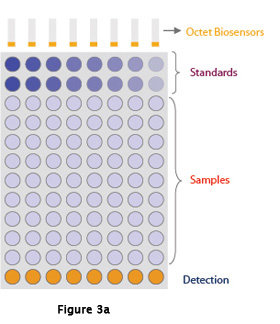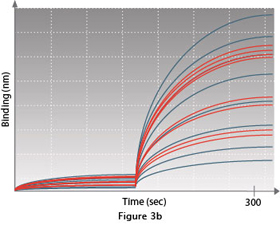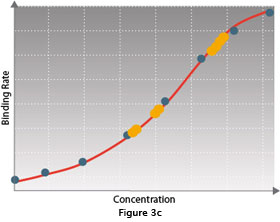ELISA has been a common practice in the biology research laboratory since the 1970's. Despite its widespread adoption in industry, its variability in results, susceptibility to human error, labor intensive workflow, and slow times-to-result remain as big hurdles for users looking to adopt ELISA in high throughput applications. Faster times-to-results, better consistency, and less human intervention are the prerequisites for next generation of high-throughput laboratory operation.
The Octet platform, with its industry-leading label-free Dip and Read format and ease-of-use, offers an excellent solution to replace assays currently performed on ELISA. The excellent precision offered by the Octet system reduces the number of replicates per sample. The high sensitivity of instruments such as the Octet RED96 or RED384 offers a wide dynamic range of >5 logs, essentially eliminating the need for dilution of samples.
Direct Quantitation
Researchers working in bioprocessing will benefit from the Octet platform's direct measurement of crude samples with no pre-measurement instrument priming or post-measurement instrument clean-up. Combined with a wide range of pre-functionalized biosensors (e.g., Protein A, Protein G, Protein L, etc.), the Octet system greatly expedites lab workflow and increases overall productivity.
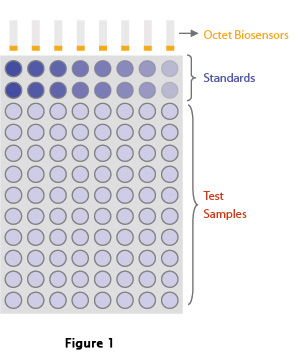
In a quantitation measurement, functionalized biosensors are dipped into wells of a 96- or 384-well microplate containing the samples to be measured (Figure 1). Binding data is collected during the brief dip and final results for 96 samples can be obtained in as little as 2 minutes — compared to more than 4 hours in conventional ELISAs. Figures 2a and 2b illustrate the binding measurement of samples in varying concentrations and the standard curve established to calculate sample concentrations, respectively.
Dip and Read quantitation measurements are performed with no user handling, further enhancing laboratory workflow and data consistency. Additionally, Octet biosensors are made of glass fibers and only the very tip of the fiber is functionalized — dipping into the sample does not alter, destroy, or even dilute the samples in any way, making the samples fully recoverable after measurement and reusable in downstream analysis.
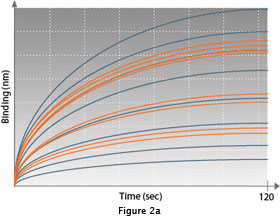
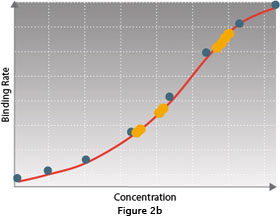
Multi-step Quantitation
Taking further advantage of Octet systems' high throughput and automated workflow, users can enhance the sensitivity of their measurements by performing sandwich-like assays on the Octet platform. This can be done by utilizing a detection reagent in the measurement to amplify the binding response. The figures below show custom multi-step ELISA assays that have been converted to Octet assays.
